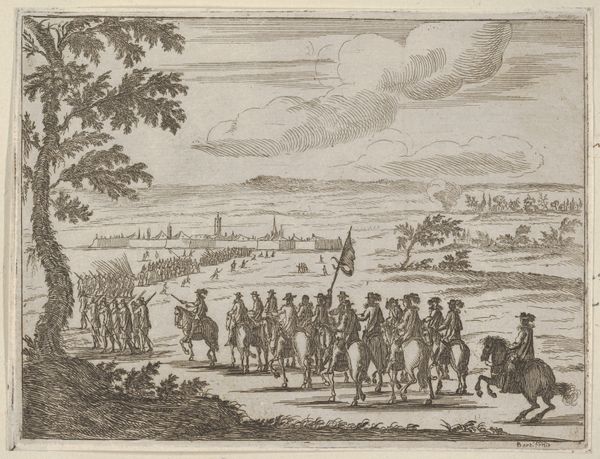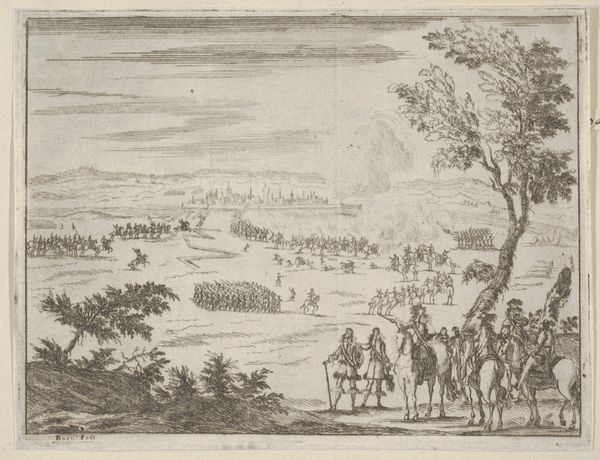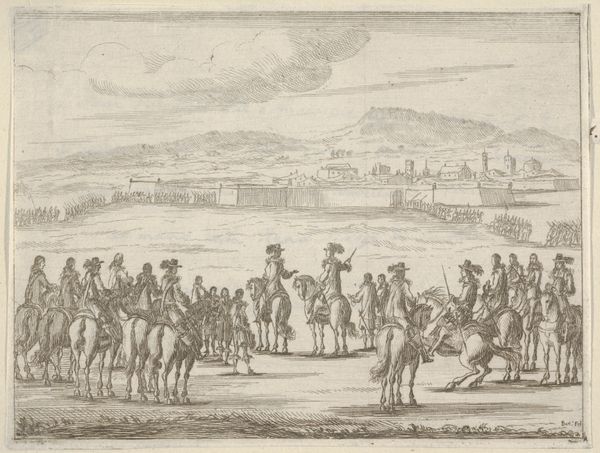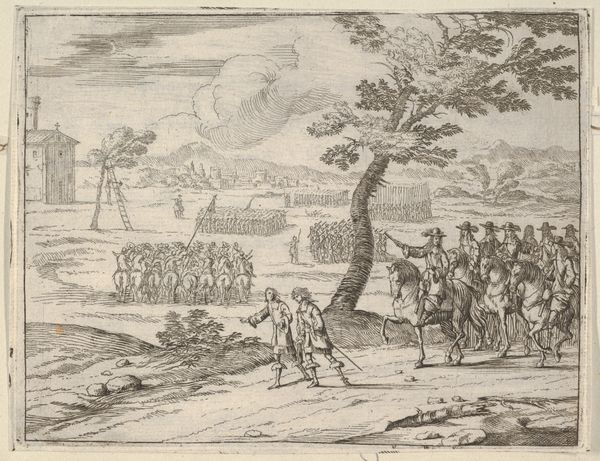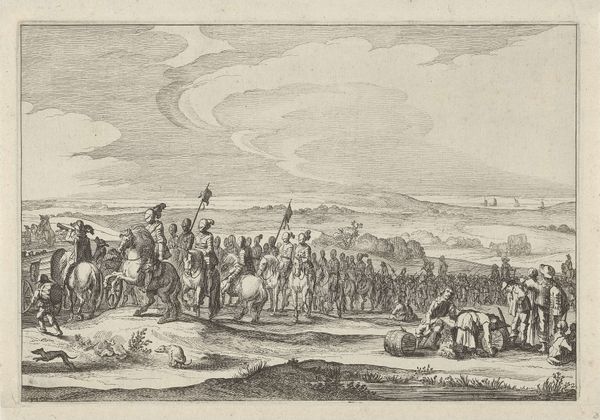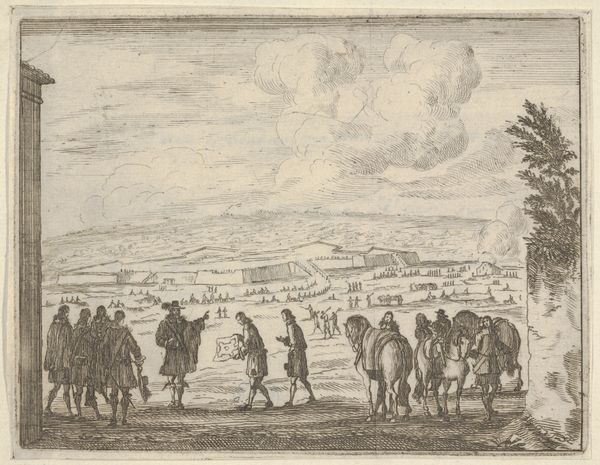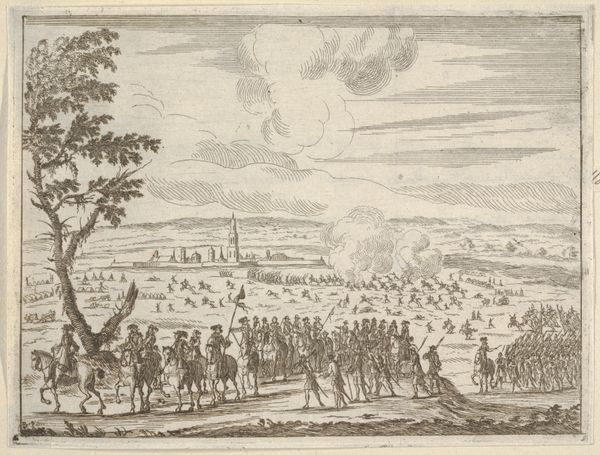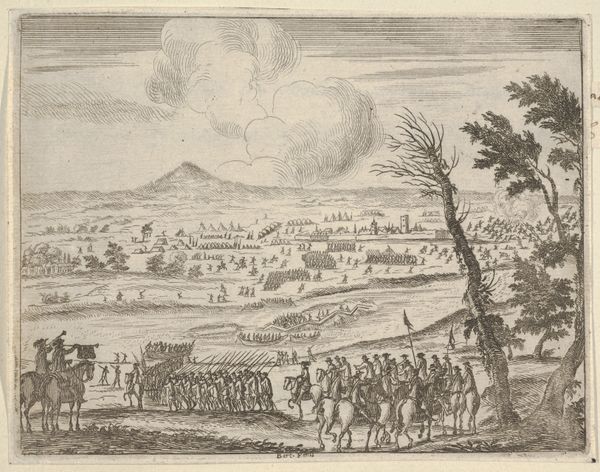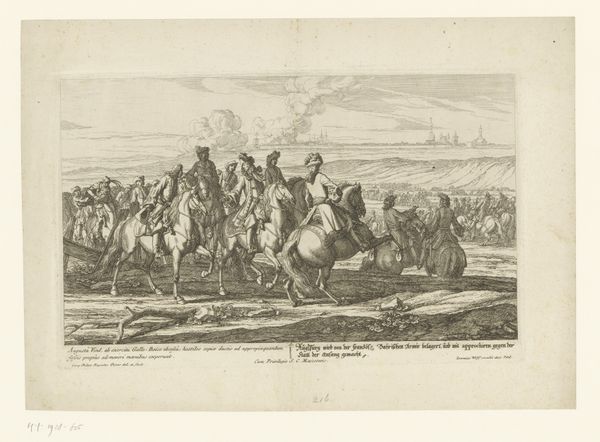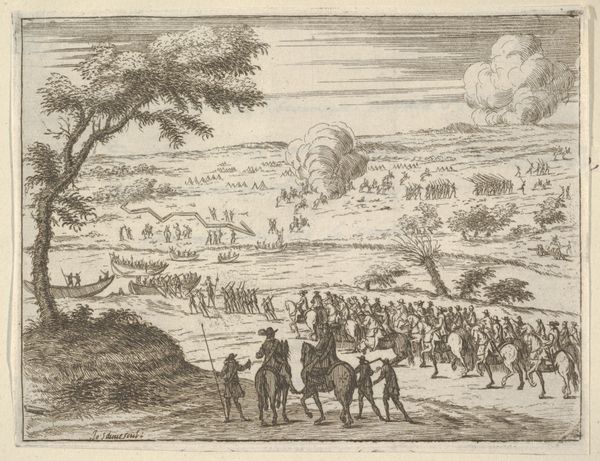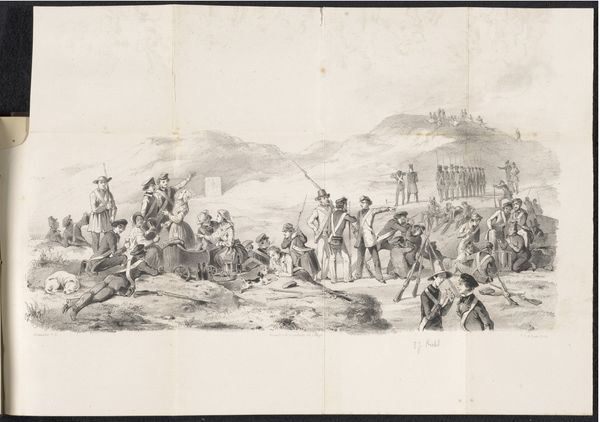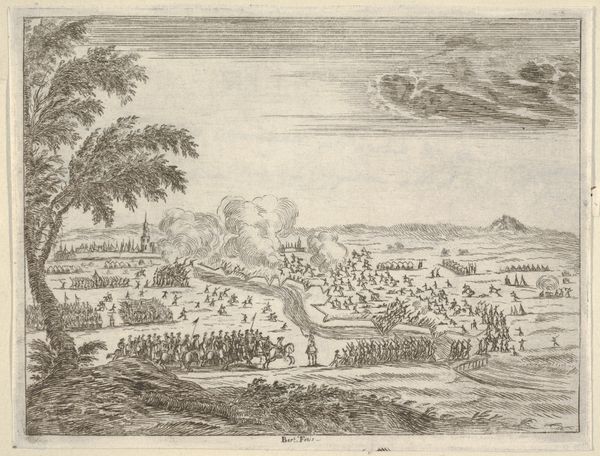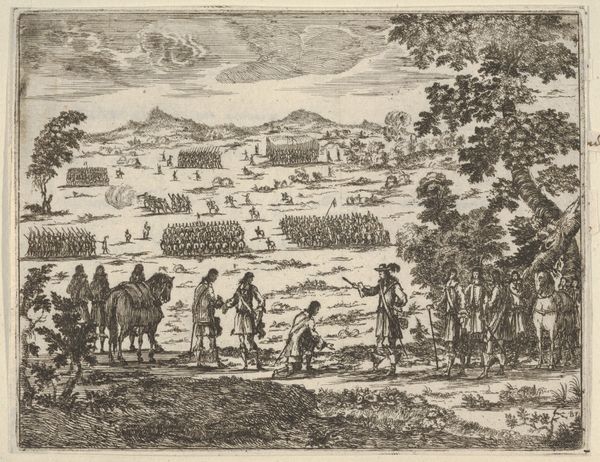![Francesco I d'Este Goes to Pinarola for the Security of his States, from L'Idea di un Principe ed Eroe Cristiano in Francesco I d'Este, di Modena e Reggio Duca VIII [...] by Bartolomeo Fenice (Fénis)](/_next/image?url=https%3A%2F%2Fd2w8kbdekdi1gv.cloudfront.net%2FeyJidWNrZXQiOiAiYXJ0ZXJhLWltYWdlcy1idWNrZXQiLCAia2V5IjogImFydHdvcmtzLzgxZTM0NDg3LTQxNzktNDc5NS1iYTc4LWNlMzAzN2RhMzEwZC84MWUzNDQ4Ny00MTc5LTQ3OTUtYmE3OC1jZTMwMzdkYTMxMGRfZnVsbC5qcGciLCAiZWRpdHMiOiB7InJlc2l6ZSI6IHsid2lkdGgiOiAxOTIwLCAiaGVpZ2h0IjogMTkyMCwgImZpdCI6ICJpbnNpZGUifX19&w=3840&q=75)
Francesco I d'Este Goes to Pinarola for the Security of his States, from L'Idea di un Principe ed Eroe Cristiano in Francesco I d'Este, di Modena e Reggio Duca VIII [...] 1659
0:00
0:00
drawing, print, engraving
#
drawing
#
baroque
#
pen drawing
# print
#
landscape
#
horse
#
cityscape
#
history-painting
#
engraving
Dimensions: Sheet: 4 15/16 × 6 5/16 in. (12.5 × 16 cm)
Copyright: Public Domain
Editor: So, here we have "Francesco I d'Este Goes to Pinarola for the Security of his States," an engraving from 1659 by Bartolomeo Fenice. It's fascinating to see this leader with his entourage in almost a parade-like journey toward the walled city. What strikes you most about its portrayal of power? Curator: It's crucial to remember that prints like this weren't simply artistic creations. They served as propaganda. Consider the context: this image comes from a book intended to promote Francesco I d’Este as an ideal ruler. How does this knowledge shift our understanding of what we are seeing? Editor: That makes sense. It’s not just documentation but almost… image crafting? Curator: Exactly! The landscape isn't merely a backdrop; it is strategically composed. The city is prominent, suggesting the Duke’s control and reach. The procession conveys strength and order. This reflects the era's concern for securing territories and projecting power. Have you considered where these prints would be seen and who would see them? Editor: I suppose, it would have been shown in court or noble homes to reinforce Duke Francesco's leadership? Curator: Precisely. Furthermore, disseminating such images through print made this projection of power more widely available and standardized. It cemented the Duke's image beyond courtly circles, shaping his public persona and reinforcing social hierarchies. This raises questions about how rulers used art to manage their image. Editor: That’s fascinating. I never considered the socio-political aspect so overtly influencing artistic representation. It adds another layer to appreciating its impact beyond aesthetics. Curator: Absolutely. Examining the social and political context truly unlocks a richer interpretation. We move past simple admiration for artistic skill to understanding the calculated message being delivered. Editor: This discussion has completely shifted my perception. I'm now seeing this print as a carefully constructed political statement, not just an artistic representation.
Comments
No comments
Be the first to comment and join the conversation on the ultimate creative platform.
